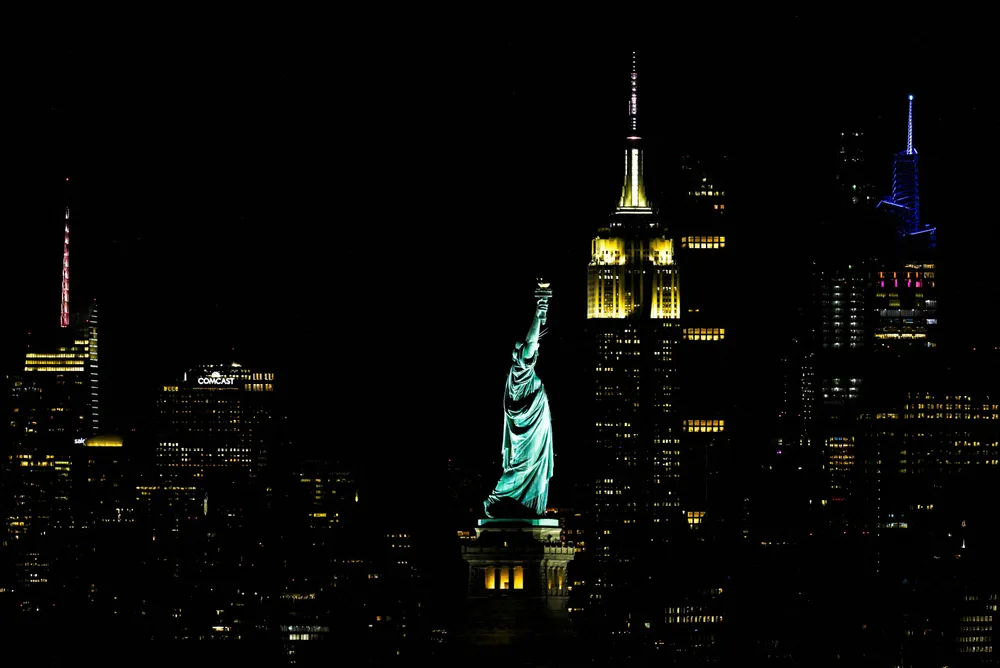New York City could face power crunch after offshore wind slowdown
Fossil-heavy Downstate region is already seeing policy driven generation retirements amid booming energy demand, according to systems operator

New York State’s lagging offshore wind rollout could put global financial capital New York City in danger of a power crunch early next decade, warned the state's independent systems operator (NYISO).
In its Reliability Needs Assessment (RNA) report released 19 November, NYISO, which operates the state's grid, identified a “Reliability Need beginning in summer 2033 within New York City primarily driven by a combination of forecasted increases in peak demand, limited additional supply,” and forced retirement of fossil fuel capacity based on both clean energy and pollution standards rules.
“Accounting for these factors, the planned bulk power transmission system will not be able to securely and [with] reliability serve the forecasted demand in New York City,” the non-profit, non-government organisation warned.
“The state of New York is struggling,” said Chris Seiple, vice chairman, energy transition and power & renewables for research consultancy Wood Mackenzie, speaking on a podcast hosted by law firm Norton Rose Fulbright.
“In New York state over the course of the past year, you have a struggling offshore wind industry, a number of canceled projects, which is just pushing back the date that offshore wind can come online,” said
Some 90% of electricity capacity in the Downstate region of New York City and neighbouring locales is fossil fuel, mostly natural gas and oil.
The state is looking to retire much of its fossil fuel generation as it strives for 70% clean power by 2030, mandated through the Climate Leadership and Community Protection Act (CLCPA).
Several other policy initiatives are likewise clamping down on capacity, including new ozone rules that will require investments in upgraded pollution controls for gas-fired peaking plants that owners are reluctant to make, and NYISO forecasts 1.6GW of peaking capacity will go offline next year.
Smaller gas-fired power plants owned by state utility New York Power Authority are also slated for retirement.
Since the CLCPA passed in 2019, the state has retired some 5.2GW of fossil fuel-fired generation but has installed only 2.25GW of new renewables in its place.
Meanwhile, power demand in the Empire State is surging, driven by electrification of the economy and transportation, increased manufacturing, and several planned investments in semiconductor manufacturing, green hydrogen plants, and cryptocurrency mining.
New York State Energy Research and Development Agency (Nyserda) this year revised its 2030 load forecast upwards nearly 9% from its 2020 report.
Offshore wind is tapped to make up the shortfall in Downstate capacity, but the sector has struggled to gain traction amid surging inflation and interest rates and supply chain disruptions.
The state mandates 9GW of offshore wind capacity by 2035, with a soft target of 6GW by 2030, but has only 1.8GW under contract after more than 6GW of projects were cancelled over the last two years.
With two planned semiconductor plants slated to add some 1.5GW of demand, Seiple said: “Economic development officials now are struggling to figure out how they're going to power” them.
Trump factor a headache for NY wind plans
The election to the US Presidency of sector hater Donald Trump, who vowed to stop offshore wind development “on day one” of his term, only adds to New York's sector struggles.
The 15GW of total US offshore wind capacity approved by President Joe Biden is likely to continue to installation, but Trump is widely expected to slow permitting to a crawl, delaying future advancement that will have major impacts for New York.
The pioneering state has the nation’s first commercial scale operational offshore wind farm, Orsted’s 132MW South Fork. The other two under contract, Orsted’s 920MW Sunrise and Equinor’s 810MW Empire Wind 1, are both federally approved for at-sea installations.
Equinor's federal permit holds a further 1.2GW that it withdrew from development last year which could be available, but the Norwegian firm declined to bid into the latest New York Round 5 (NY5) tender.
Copenhagen Infrastructure Partners and Orsted both bid into the round, but their projects are at early stages in the already decade-long permitting process, which is expected to only slow further under Trump.
New York generates nearly half of its power needs from clean sources, overwhelmingly from Upstate nuclear and hydroelectric dams, but delivering this power to New York City will be challenged with the cancellation of Clean Path New York (CPNY) transmission project.
CPNY aimed to deliver 3.8GW of Upstate power to New York City before developers Invenergy and energyRE cancelled it over cost concerns.
The Champlain Hudson Power Express high voltage direct current (HVDC) line to transmit 1.2GW of Quebec hydropower to New York City remains on track for completion in 2026, but its electricity could face a 25% price hike if Trump follows through on threats to tax Canadian imports.
The state continues to advance onshore renewables, including installing 6GW of behind-the-metre solar twice in a row, and is setting the framework for procuring 6GW of energy storage.
Despite these efforts, Nyserda expects New York to fall short of its 2030 goal by some 37%.
'It's a long game'
Still, offshore wind, industry veterans remain bullish on offshore wind's long-term prospects for New York and the nation.
“The reality is, it's a very long game,” said Eamon Nolan, partner at global law firm Vinson & Elkins at its New York City branch.
Nolan worked on several major sector deals including the $1.1bn Orsted-Global Infrastructure Partners' South Fork acquisition.
“People will take a longer-term view, and I think they'll put their money to work” investing in the sector on project-by-project basis,” he added.
(Copyright)